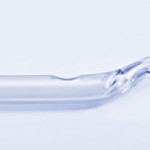Do you catheterize? Scared of catheters? Not sure about types of catheters used?
 Diane Newman DNP, ANP-BC, FANN is a Nurse Practitioner specializing in the prevention of urinary tract infections. She provides training for urology nurses and other medical professionals and recently shared two excellent webcasts on catheterization, one on types and the other on complications. Here’s a summary of what she offers with links to the videos at the end of this blog! Please note that these videos are for medical professionals but they might help you understand more about the pros and cons of catheter use. She also uses the term “IC” for intermittent catheterization rather than as a reference for interstitial cystitis.
Diane Newman DNP, ANP-BC, FANN is a Nurse Practitioner specializing in the prevention of urinary tract infections. She provides training for urology nurses and other medical professionals and recently shared two excellent webcasts on catheterization, one on types and the other on complications. Here’s a summary of what she offers with links to the videos at the end of this blog! Please note that these videos are for medical professionals but they might help you understand more about the pros and cons of catheter use. She also uses the term “IC” for intermittent catheterization rather than as a reference for interstitial cystitis.
Types of Catheters:
There are several types of catheters available:
Non-Latex – Clear, rigid with larger diameters. These are made from a variety of plastic polymers.
Latex – These “red rubber” catheters are very flexible but can provoke latex allergy symptoms. We do NOT recommend the use of these catheters for IC patients given our often overwhelming sensitivities to chemicals. As Diane shared, latex allergies are increasing in the urology patient population, thus these are not used often.
Pre-Gelled – Pre-gelled catheters are coated with a jelly to make insertion easier.
Hydrophilic Coated – Hydrophilic catheters are the preferred choice for patients doing bladder instillations. These ONE TIME use catheters are very slippery when exposed to water, thus are often much easier to slip through the urethra. However, they must be used within just a few minutes of opening or they become tacky and impossible to insert. Research studies have found that hydrophilic catheters appear to significantly reduce the risk of urinary tract infection.
Sizing of Catheters:
Catheters come in “French” scale sizes that represent the diameter of the catheter. Children use 6FR through 12FR while adults generally use a 14FR through 22FR. However, because IC patients are often so sensitive, urologists generally recommend using the smallest available catheters, on average the 12FR, for patients who are self-catheterizing and/or doing instillations at home.
Catheters also come in various lengths. Because men have a longer urethra, they generally use catheters that are 12″ to 16″ in length while women prefer smaller catheters that are 5 to 8″ size.
Catheter Tips:
 Catheters come in two tip variations, straight vs. Coude (slightly rounded). The Coude tip is slightly narrower, making it easier to insert in patients with a urethral stricture or enlarged prostate.
Catheters come in two tip variations, straight vs. Coude (slightly rounded). The Coude tip is slightly narrower, making it easier to insert in patients with a urethral stricture or enlarged prostate.
Catheter Systems:
“No-Touch” catheters help to prevent infections because the patient does not touch the catheter directly. These self contained systems includes the catheter, finger guide and a closed bag for urine to collect into. These are NOT used for the instillation of medicine. Rather these are used to collect urine on those rare conditions that urinary retention occurs. These are ideal for traveling, as well, that can be easily discarded and as she says, works well, for patients who use a catheter at work.
Video Link – http://www.urotoday.com/236-ic-catheter-types-and-design-part1?lang=en
– – – – – – – – – – –
Complications of Catheterization
There are several risks associated with catheterization, many of which can be prevented with using the correct techniques and catheters. As Ms. Newman states, catheterization should not hurt and if performed correctly, can dramatically reduce the risk of injury or infection.
Infection
The most common complication is, of course, infection. If used improperly or reused and not cleansed correctly, bacteria can be passed into the bladder via the catheter where it can cause infection. Infection is particularly common in women due to the higher levels of e-coli bacteria found on the perineum.
To prevent infection, patients are usually prescribed single use catheters or, as she mentioned in the previous video, “No-Touch” systems which prevent the fingers from touching the catheter and thereby passing bacteria.
Infections are also more likely in patients who do not empty their urine frequently thus urine stays in the bladder far longer than it should. Diane suggests that the bladder should be emptied at about 400cc’s though, of course, for IC patients that may need to be lower due to our higher bladder sensitivity.
Damage
Urethral damage is more commonly seen in men with their longer urethra. If the man is forcing a catheter in against a closed sphincter can cause urethritis, aka inflammation. Relaxation (i.e. taking several deep breaths) prior to trying to catheterize is essential to help prevent this.
Urethral stricture, a narrowing of the urethra, is often an inflammatory response to repeat catheterization. Using a hydrophilic catheter has beens shown to help reduce these.
Pain
Catheterization should not cause pain with insertion. If the patient experiences pain, they need to contact their medical care provider to help determine why pain is occurring.
Bleeding
Bleeding is common with initial catheterizations and occasional blood is considered normal. However, persistent or heavy bleeding is suggestive of a bladder infection or another problem and should be reported to their urologist immediately. If a patient is peeing red blood, that is a serious complication that requires immediate medical care. Patients should contact their doctors and/or visit a local critical care center.
Bladder Stones
Bladder Stones can occur in patients who use in-dwelling catheters that are kept in the bladder for long periods of times (i.e. days or weeks). Over time, sharp crystals can develop on the surface of the catheter which can make removal uncomfortable. Bladder stones can also grow around pubic hairs introduced to the bladder thus patients are often instructed to trim (but not shave) hair.
Video Link – http://www.urotoday.com/238-intermittent-catheters-complications?lang=en

… [Trackback]
[…] Informations on that Topic: ic-network.com/confused-about-catheters/ […]